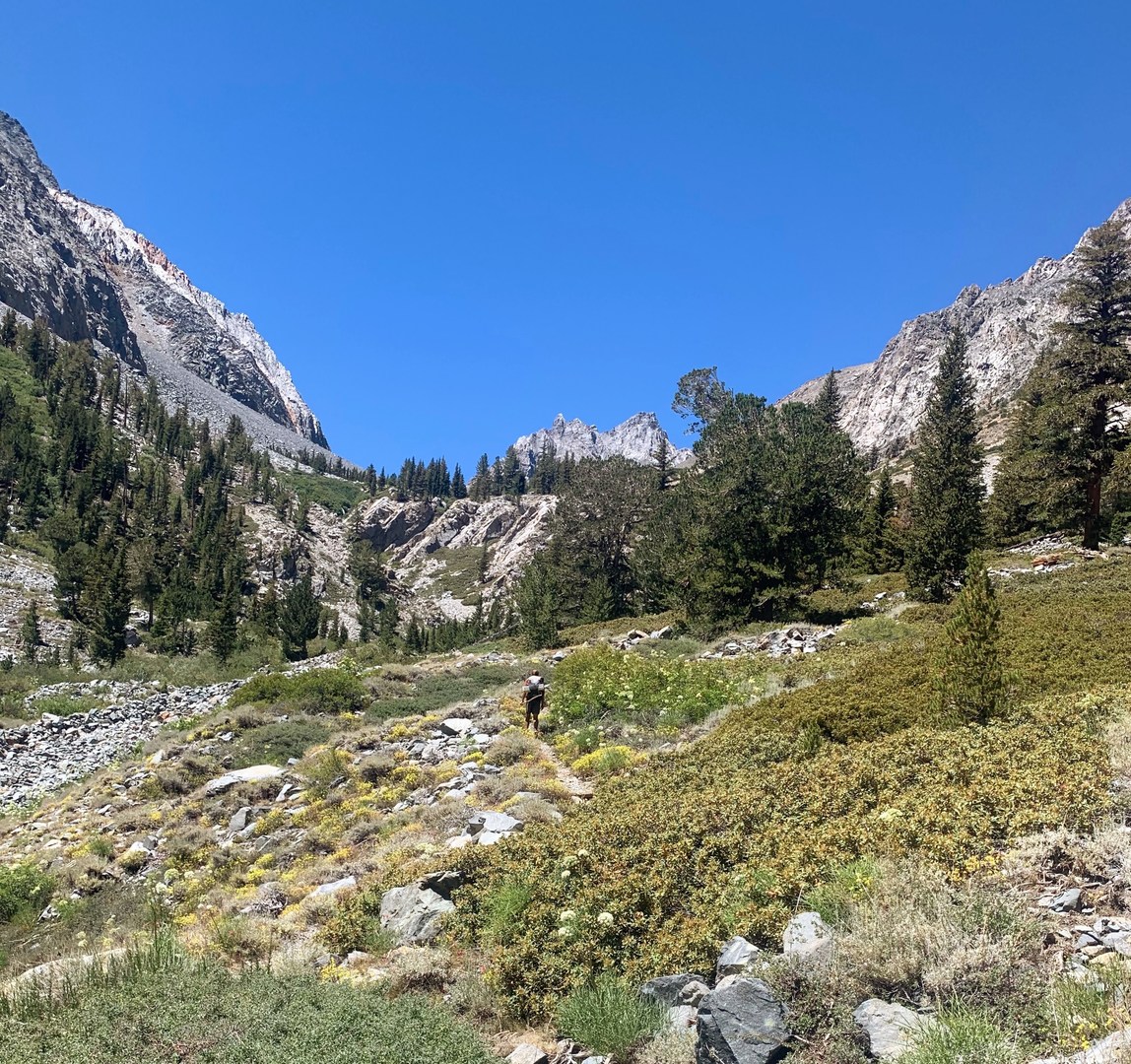Shepherd to Baxter is a substantial 47-mile point-to-point in the Eastern Sierra. As the name suggests, this route connects Shepherd Pass Trailhead to Baxter Pass Trailhead, and requires a shuttle. It can be done in either direction, but will be described here beginning at Shepherd and ending at Baxter. Besides utilizing both pass trails, a significant portion of this route is spent along the Pacific Crest Trail/John Muir Trail (PCT/JMT). It is also important to note that there is a lot of bear activity in this area, and bear canisters are highly recommended.
After dropping a car off at Baxter Pass Trailhead, our route begins at Shepherd Pass Trailhead. There are two trailheads here, one for stock, the other for hikers (the stock trail adds an extra 1.25 miles to the hike). Shepherd Pass Trails climbs nearly 6,000 feet over 10 miles to reach the pass. Note that a small patch of snow seems to linger late into the season on the last stretch to Shepherd Pass (12,033ft.), and can feel surprisingly harrowing for the unsuspecting hiker. From the pass, the trail descends 4 miles to meet Tyndall Creek and the PCT/JMT. About 5 miles north, Forester Pass marks the route’s high point near 13,160ft. In heavy snow years, the switchbacking trail is buried, and the hiker will need proper snow gear for safe maneuvering up and over the pass. After Forester Pass, a long, 8-mile descent takes the hiker along the Bubbs Creek drainage, and passes such landmarks as University Peak and the Kearsarge Pinnacles to the east, and East Vidette to the west. Nearly 12 miles after Forester, the route crosses Glen Pass (11,926ft.) before descending to the resplendent Rae Lakes. At Dollar Lake near mile 36 of our route, take the junction east toward Baxter Pass. The trail can be overgrown and quite difficult to follow here. Baxter Lake sits just below the pass, and offers a final chance for camp before crossing back over the crest. Once over Baxter Pass (12,330ft.), the trail descends steeply to the trailhead. It is a tough hike down, with significant exposure as well as sneaky stinging nettle.
Hikers will pass through the John Muir Wilderness in Inyo National Forest and enter Sequoia-Kings Canyon National Park. Wilderness permits are required for backcountry camping, which can be found at www.recreation.gov. For more information regarding advisories, weather, road conditions, campgrounds and more, check out the Inyo National Forest website at https://www.fs.usda.gov/inyo, and the Sequoia-Kings Canyon website at https://www.nps.gov/seki/index.htm. Practice the principles of leave no trace, and take action to defend threatened wilderness areas (wildernesswatch.org).

































Comments
Sign In and share them.